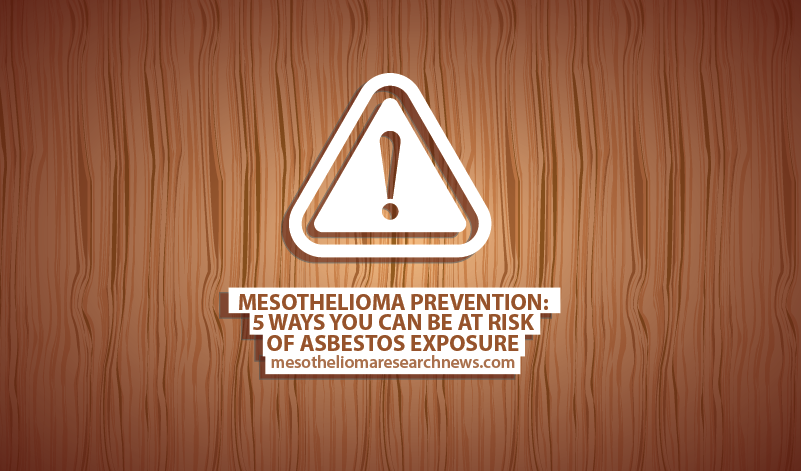1. Mechanical, Construction, and Ship Building Workers
Exposure to asbestos is more common than people know: It can occur in many locations and on many occasions. But given the asbestos’ properties of heat resistance and impermeability, the material is often found in the mechanical, construction, and ship building industries. Exposure on the job is called “occupational exposure.”
In construction, people at higher risk are plumbers, electricians, roofers, pipe fitters, sheet metal workers, masons, carpenters, factory workers, drywallers, painters, tile setters, plasterers, insulators, laborers, miners, and boilermakers. In the shipbuilding industry, occupations at higher risk include steamfitters, ironworkers, welders, boilermakers, ship fitters, machinists, electricians, mill wrights, and operating engineers.
2. People Under Secondary Exposure
Secondary exposure is also possible. According to the Mesothelioma Applied Research Foundation,” a significant cadre of patients has appeared in the category of secondary, or stealth, asbestos exposure. For example, family members of asbestos workers are exposed through contact with contaminated clothing or tools brought home from work.”
Construction laborers also fall into the secondary category. They are typically identified as casual, summer, or part-time workers who assist the principal trades with clean up of work sites, removal of debris, and other light and unskilled labor within a contaminated environment. Often, laborers work without protective gear.
3. Exposure in Office Spaces, Schools, Businesses, and Homes
People are also at risk if asbestos is present in any work place or at home. Incidences of mesothelioma have increased among white-collar workers, like teachers or office workers, because of long-term presence in contaminated environments that include office spaces, schools and other businesses. New sources of asbestos exposure are consistently identified. The Mesothelioma Applied Research Foundation believes the problem rests in the lack of knowledge about where and why asbestos was used in the first place.
Regardless of government recommendations against asbestos, there are still numerous buildings with asbestos that continue standing and being used. Because asbestos is dangerous, it is important that people seek expert help for removal. Haphazard removal hurts more than helps because the agent can be released farther and more potently into the immediate environment.
4. Veterans
Veterans are known also to struggle with mesothelioma because of military exposure during the 20th century. The U.S. Armed Forces used asbestos in many materials for its fire-proofing properties, leading to high levels of exposure among troops. Equipment and buildings used by the armed forces included aircraft brakes, gaskets, engine shields and cargo bays; trucks, tanks, military barracks, mess halls, administrative buildings and other locations.
Though use of asbestos was common before its risks were known and regulated by the Environmental Protection Agency (EPA), its consequences are still at stake.
The Mesothelioma Applied Research Foundation states: “Due to the long latency period of the disease, these veterans are just now beginning to experience mesothelioma symptoms or symptoms of other lung diseases resulting from the asbestos exposure while they served in the military. Although the use of asbestos in such common products is now regulated, the effects can’t be reversed for veterans already exposed.”
5. Asbestos Exposure from 9/11
Survivors and first responders to the 9/11 attack are also at higher risk for mesothelioma. It is estimated that the World Trade Centers were built using about 400 tons of asbestos. On September 11, 2001, when the twin towers in Manhattan collapsed into a giant cloud of dust and debris, the cloud contained toxic fumes and particles which were inhaled by people nearby.
Without realizing it, firemen, medical personnel, policemen and volunteers spent days at Ground Zero looking for survivors or bodies, but also inhaling the contaminated air. Now, more than a decade following the attacks, there are still concerns about the health of first responders and other people who were in the location at the time.
In June 2012, the National Institute for Occupational Safety and Health ruled to include mesothelioma with 50 other types of cancer, into a health and compensation fund for those involved in 9/11. All first responders, volunteers, firemen, policemen, medical personnel and local residents can quality for free medical treatment in the case of mesothelioma.
Learn more about mesothelioma here: http://bit.ly/learnMesothelioma
Mesothelioma Research News is strictly a news and information website about the disease. It does not provide medical advice, diagnosis or treatment. This content is not intended to be a substitute for professional medical advice, diagnosis, or treatment. Always seek the advice of your physician or other qualified health provider with any questions you may have regarding a medical condition. Never disregard professional medical advice or delay in seeking it because of something you have read on this website.


